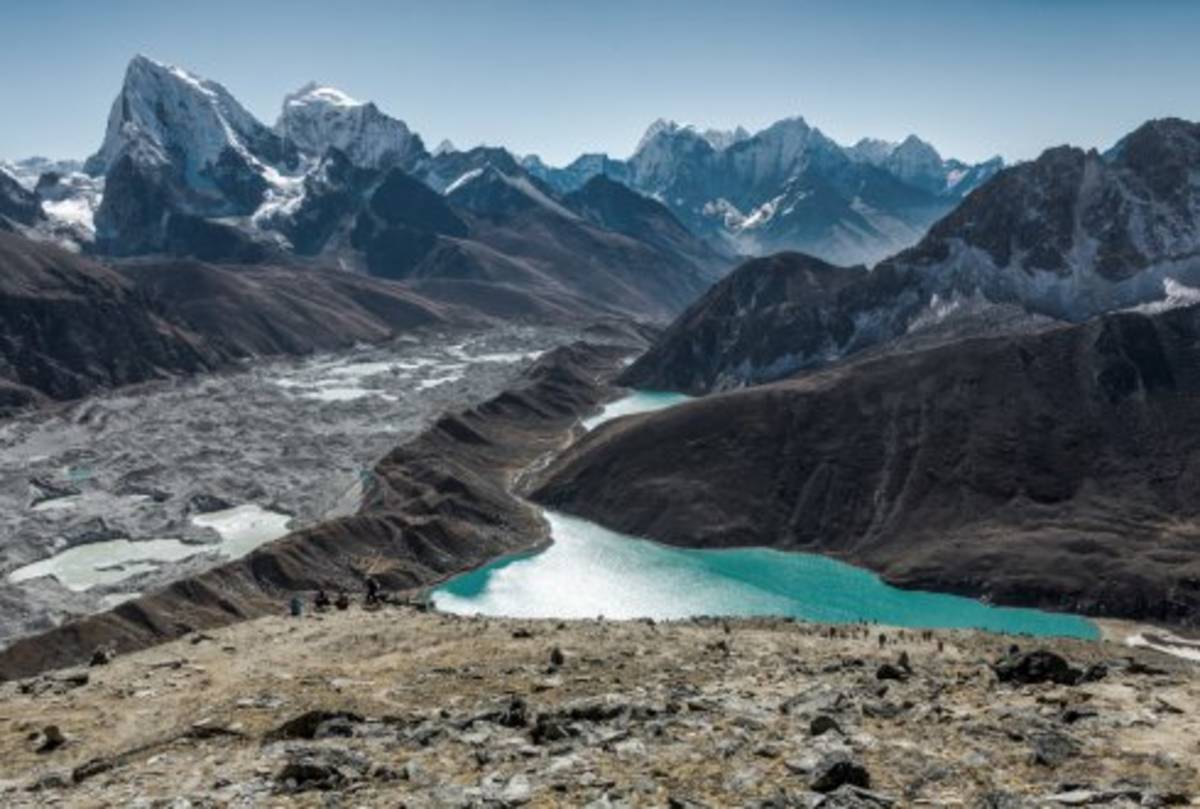With over 900 million inhabitants, the South-Asian river basins of the Indus, Ganges and Brahmaputra are amongst the world’s most densely populated areas. To a large extent, water supply in these areas depends on melting glaciers and snow from the Himalaya. Meltwater is used for crop irrigation and provides farmers with sufficient water in periods of drought and minimal rainfall. For the first time, the researchers showed how ice and snow volumes are crucial for the water supply of the South Asian river basins and how many people and irrigated fields are actually depending on this source.
Irrigation withdrawal from meltwater
This study shows that 129 million farmers (partly) irrigate their land using water originating from snow and glaciers in the mountains. Meltwater alone provides enough water to grow food crops to sustain a balanced diet for 38 million people. Dependence is largest in the Indus basin, where the agricultural areas see little precipitation and therefore rely on other water sources. In the dry season up to 60% of the total irrigation withdrawals originate from mountain snow and glacier melt. The dependence in the floodplains of the Ganges is comparatively lower, but incoming meltwater is still an essential source during the dry season. In particular for a crop like sugarcane.
Transportation over hundreds of kilometers
The researchers analyzed when the glaciers melt, how meltwater mixes with rainfall and groundwater when propagating downstream and is how it is subsequently distributed through the irrigation systems. “The Indus and Ganges basins have complex irrigation systems consisting of canals to transport water to the agricultural fields, sometimes over hundreds of kilometers”, explains Hester Biemans, researcher at Wageningen University & Research and first author of the study. “This research shows for the first time to what extent irrigation systems are fed with meltwater, how meltwater contributes to crop production, in which period it is most crucial and for which crop. We found that mainly the production of rice and cotton strongly depends on the timely availability of snow and glacier melt water.”
Political choice
Previous research showed that a third of the total ice volume in the Himalaya might have disappeared by the end of the 21st century. Considering the accelerated melting process and the increasing unpredictability of the monsoon, the researchers emphasize that farmers will need to adapt their practices to these changing circumstances. “Farmers might need to adjust their sowing dates or change to crops that require less water,” Biemans explains. “Cotton is a water-demanding crop that is sown during the driest months of the year. It might be better to grow cotton in areas with more water available. But this is mainly a political choice. The findings of this study can provide policy makers with quantitative information needed to support these kind of choices.”
This study was conducted as part of the large project Hi-Aware on climate change adaptation in the Indus, Ganges and Brahmaputra river basins. Follow-up research will focus on the future, the importance of meltwater for agriculture in a changing climate,, and the search for appropriate adaptation strategies and potential solutions for an emerging water crisis.
Ihttps://www.wur.nl/en/Research-Results/Research-Institutes/Environmental-Research/show-wenr/Millions-of-farmers-depend-on-meltwater-from-Himalaya-glaciers.htm
Millions of farmers depend on meltwater from Himalaya glaciers
Around 129 million farmers depend on meltwater from the Himalayan glaciers for their crop production and livelihoods. This is shown by an international group of researchers from Wageningen University & Research and Utrecht University, among others, in a new study published in Nature Sustainability today. A Science Advances paper last month, already showed that glaciers were melting at a higher rate in the last twenty years than in the same period before.

Event Information
Date: 16.07.2019 - 03:05 PM
Contact
- Francine Loos
- Phone: +31 (0)317 481918
- Email: francine.loos@wur.nl